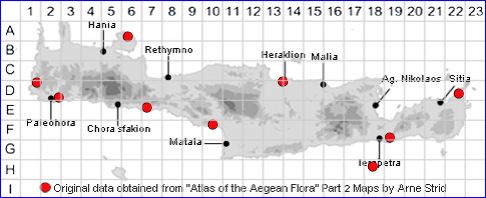
SPECIES DESCRIPTION
ALKANNA TINCTORIA
Family:- BORAGINACEAE
Common Name:- Dyer's alkanet
Synonyms:- None
Meaning:- Alkanna (L) From the Arabic, al-henna for Lawsonia inermis, the source
of henna.
Tinctoria (L) Used for dying.
General description:- Perennial, sometimes forming dense cushions. The whole
plant greyish-green, with a mixture of stiff, somewhat tubercle-based hairs and
short, eglandular hairs.
Stems:-
a) (5-)10-20(-50) cm.
b) procumbent or ascending.
c) eglandular.
Leaves:-
1) Basal:
a) 6-15 x 0·7-1·5 cm.
b) linear-lanceolate.
2) Lower cauline:
a) oblong-linear, heart-shaped (cordate) at the base.
Flowers:-
1) Racemes:
a) long, many flowered.
2) Bracts:
a) not or only slightly longer than the calyx.
b) oblong-lanceolate.
3) Calyx:
a) 4-5 mm in flower, 5-6 mm in fruit.
b) eglandular.
4) Corolla:
a) blue, hairless (glabrous) outside.
b) tube as long as or slightly longer than the calyx.
c) limb 6-7(-8) mm diam.
Fruit:-
1) Nutlets:
a) c. 2 mm. diam.
b) irregularly covered in a network of small wart-like projections (reticulate-
tuberculate).
Key features:-
1) Corolla glabrous outside.
2) Corolla bright blue.
Habitat:- Rocky places in pdry open shrubby vegetation and open woodland, olive
groves, fallow terraces, occasionally on stabilised maritime sand dunes.
Distribution:- Widespread in the Mediterranean and throughout Greece. Rare on
Crete known from only a few coastal locations.
Flowering time:- Mar-June.
Photos by:- Georgios Dimakakos
